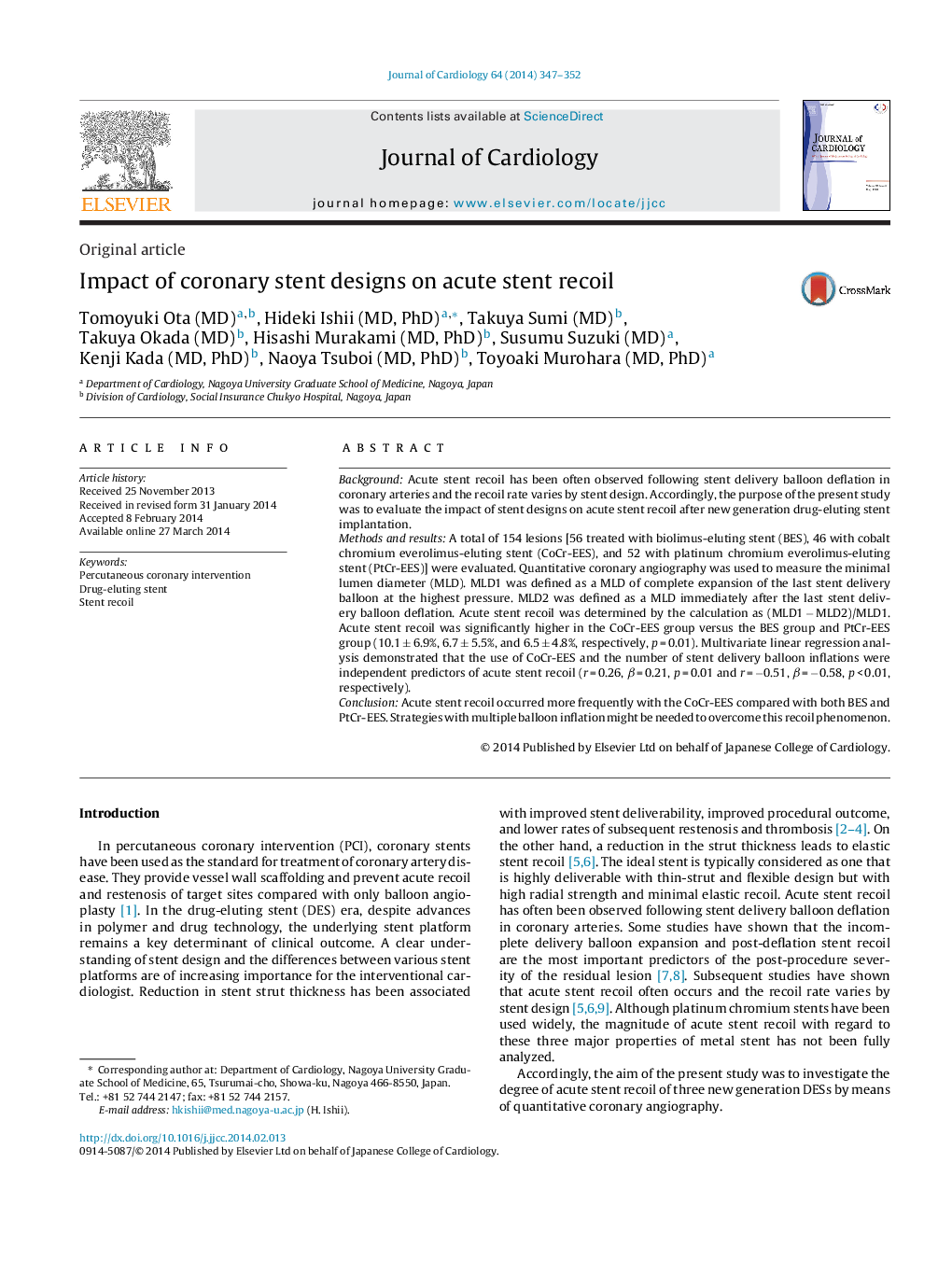| Article ID | Journal | Published Year | Pages | File Type |
|---|---|---|---|---|
| 2963005 | Journal of Cardiology | 2014 | 6 Pages |
BackgroundAcute stent recoil has been often observed following stent delivery balloon deflation in coronary arteries and the recoil rate varies by stent design. Accordingly, the purpose of the present study was to evaluate the impact of stent designs on acute stent recoil after new generation drug-eluting stent implantation.Methods and resultsA total of 154 lesions [56 treated with biolimus-eluting stent (BES), 46 with cobalt chromium everolimus-eluting stent (CoCr-EES), and 52 with platinum chromium everolimus-eluting stent (PtCr-EES)] were evaluated. Quantitative coronary angiography was used to measure the minimal lumen diameter (MLD). MLD1 was defined as a MLD of complete expansion of the last stent delivery balloon at the highest pressure. MLD2 was defined as a MLD immediately after the last stent delivery balloon deflation. Acute stent recoil was determined by the calculation as (MLD1 − MLD2)/MLD1. Acute stent recoil was significantly higher in the CoCr-EES group versus the BES group and PtCr-EES group (10.1 ± 6.9%, 6.7 ± 5.5%, and 6.5 ± 4.8%, respectively, p = 0.01). Multivariate linear regression analysis demonstrated that the use of CoCr-EES and the number of stent delivery balloon inflations were independent predictors of acute stent recoil (r = 0.26, β = 0.21, p = 0.01 and r = −0.51, β = −0.58, p < 0.01, respectively).ConclusionAcute stent recoil occurred more frequently with the CoCr-EES compared with both BES and PtCr-EES. Strategies with multiple balloon inflation might be needed to overcome this recoil phenomenon.
